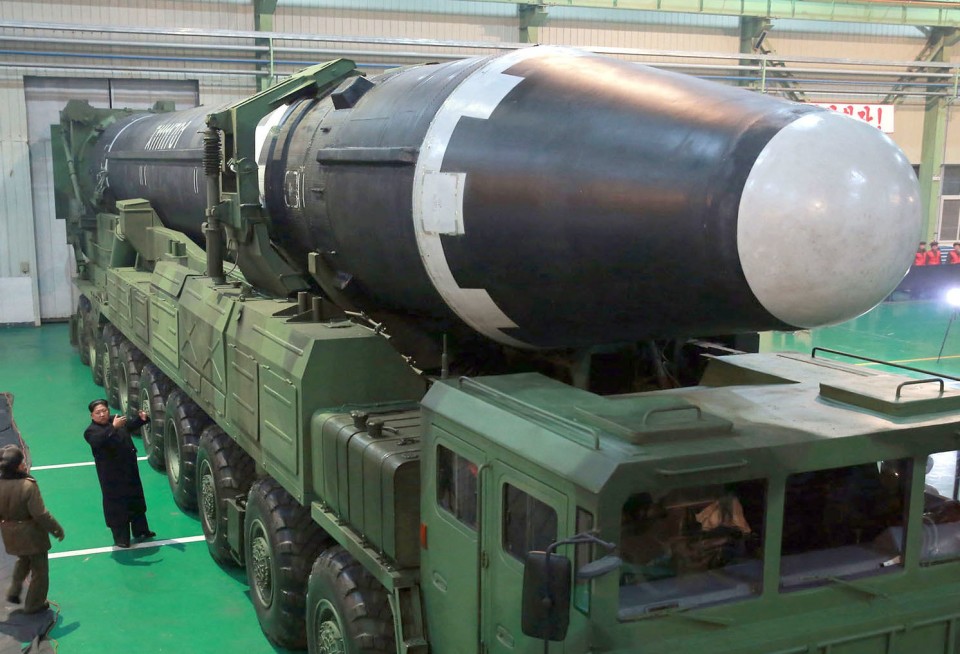[ad_1]
North Korea appears to be preparing for a possible intercontinental ballistic missile test within the next 48 to 96 hours, just as U.S. President Joe Biden is scheduled to travel to Asia, CNN reported Tuesday, citing a U.S. official familiar with the latest intelligence assessment.
Biden is planning a five-day visit to South Korea and Japan from Friday for what would be his first trip to the region since taking office last year. The trip will take place amid concerns that North Korea is also preparing to conduct its first nuclear test in years.
“The things we have noticed in the past for a launch (of an ICBM) are the things we are noticing now,” the official was quoted as saying.

Photo distributed by the Korean Central News Agency on Oct. 30, 2017, shows Kim Jong Un inspecting a Hwasong-15 intercontinental ballistic missile. (KNS/Kyodo)
The launch site under satellite observation is located near Pyongyang, according to CNN. The official would not detail specifics of the current imagery, but typically, intelligence analysts look for signs of scaffolding or other launcher equipment, fueling, vehicles and personnel, it added.
North Korea has been test-firing a series of ballistic missiles in recent months, despite condemnations from the United States and its two Asian allies.
In March, Pyongyang conducted its first launch of an ICBM since November 2017, ending a self-imposed moratorium on test-firing such missiles that had stretched back to April 2018. It had also tested an ICBM system in prior missile tests.
According to CNN, the United States now believes that a North Korean missile launch on May 4 was a failed ICBM that exploded shortly after launch.
The U.S. government, meanwhile, has unveiled an assessment that North Korea could be ready as early as this month to conduct a nuclear test at its Punggye-ri site. North Korea’s last nuclear test, its sixth, took place in September 2017.
U.S. nuclear experts have also recently come up with an analysis that North Korea is resuming construction of a reactor at the Yongbyon nuclear complex that, if completed, would significantly increase its production of plutonium for nuclear weapons.
North Korea had frozen construction of the Yongbyon No. 2 reactor in 1994. It is believed to be capable of producing 55 kilograms of weapons grade plutonium a year, or about ten times as much as the existing 5-megawatt reactor at the same complex.
But satellite images taken in April and May showed North Korea laying a pipeline to connect a reactor cooling system with a pumphouse on the river to provide access to water, according to an analysis by Jeffrey Lewis, professor at the James Martin Center for Nonproliferation Studies at the Middlebury Institute of International Studies at Monterey, and others.
“Connecting the secondary cooling loop strongly indicates that North Korea now intends to complete construction of the reactor,” the analysis said, but added, “It is unclear how soon North Korea could do so.”
Related coverage:
North Korea fires 3 short-range ballistic missiles
[ad_2]
Source link















